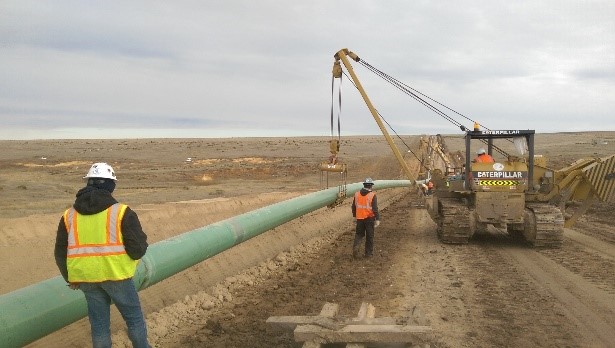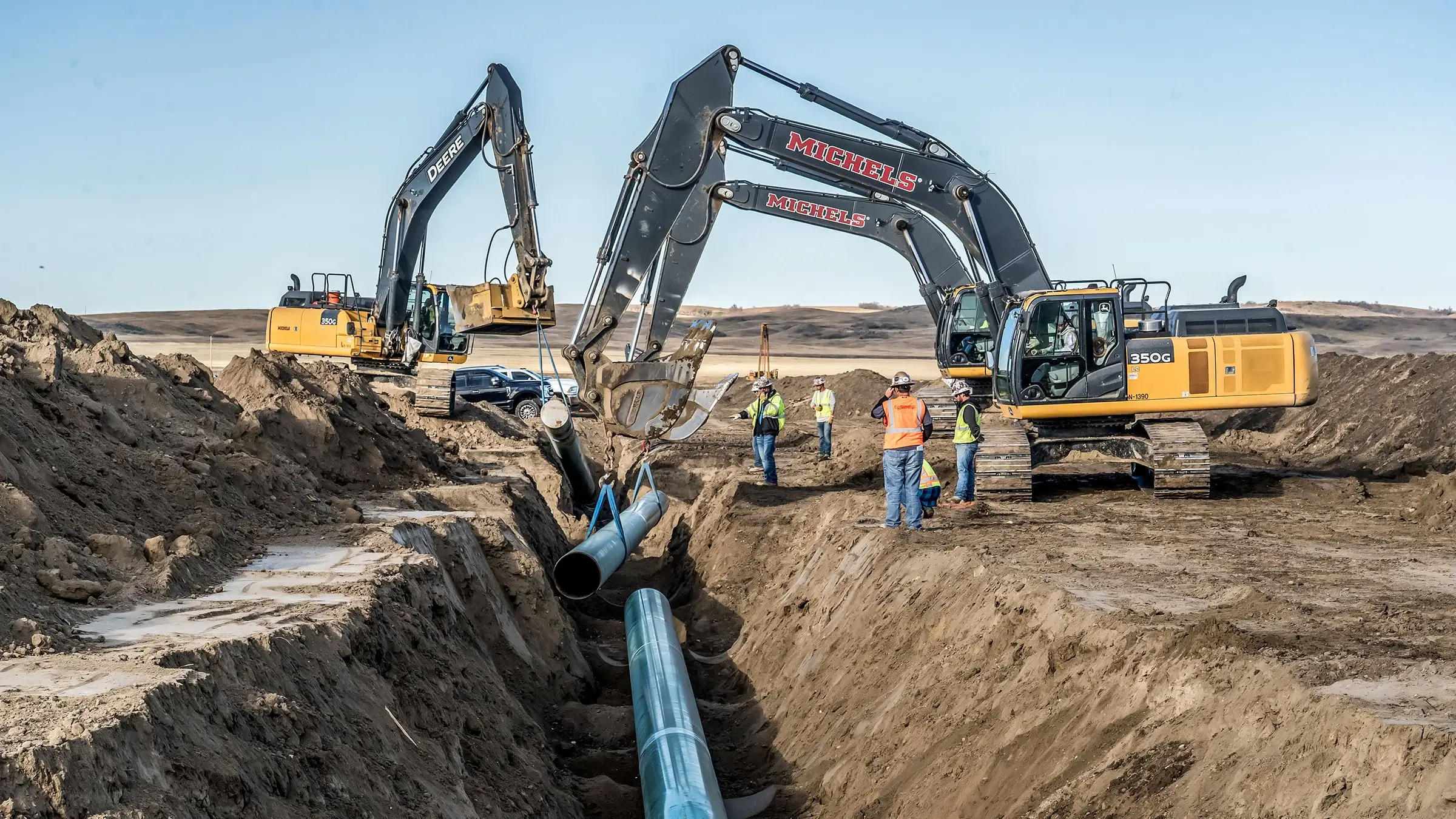What Affects Your System’s Lifespan? Insights From Creek Pipe HDPE installation
A Deep Dive Into Pipes Installation: Necessary Variables and Factors To Consider for Effective Projects
Efficient pipe installation is an essential aspect of engineering projects. It involves a variety of variables, from material selection to specific sizing and design. Each decision can notably influence the system's efficiency and durability. Recognizing these elements is essential for avoiding expensive errors. Creek Pipe Texas oilfield. As teams browse via the complexities of installation, numerous essential considerations emerge that warrant interest. What are the pivotal elements that can make or break a piping job?
Recognizing Pipe Products and Their Applications
When picking pipe materials, one must take into consideration the certain applications and environmental conditions they will certainly deal with. Various materials supply distinctive properties that accommodate various demands. For example, PVC is lightweight and immune to corrosion, making it perfect for water circulation systems. Conversely, steel pipelines supply strength and durability, suitable for high-pressure applications yet may need protective layers to avoid rust.Copper pipelines are preferred for pipes because of their antimicrobial buildings and convenience of installation, while polyethylene is often used in underground applications as a result of its versatility and resistance to cracking.The choice of product likewise depends upon temperature level extremes, chemical direct exposure, and installation area. For high-temperature applications, materials like CPVC or PEX can be useful. Eventually, recognizing the features and constraints of each material help in making informed decisions that boost system performance and durability.
Relevance of Proper Sizing and Style
Correct sizing and style of pipelines are vital for making sure optimal flow rates and decreasing stress loss. These aspects likewise play a substantial duty in figuring out the compatibility of materials utilized in the installation. A methodical method to sizing and design can considerably enhance the efficiency and durability of a piping system.
Influence On Circulation Rates
Circulation rates in piping systems are seriously affected by the sizing and layout of the pipes. Effectively sized pipes assure that the liquid can move successfully, minimizing turbulence and making the most of flow capacity. Large pipes can lead to decreased circulation speeds, while undersized pipes might restrict circulation, resulting in raised rubbing and possible blockages. The style needs to likewise think about elements such as pipe product, interior surface level of smoothness, and format, as these contribute to the overall performance of fluid transportation. In addition, the plan of installations and connections within the system can influence circulation prices. Consequently, thorough interest to pipe sizing and design is crucial for maximizing circulation performance in any type of piping installation project.
Stress Loss Factors To Consider

How can press loss substantially affect the performance of a piping system? Pressure loss is a vital element that can considerably lessen the efficiency of liquid transportation systems. When pipelines are improperly sized or designed, too much pressure loss may take place, resulting in reduced circulation prices and boosted energy usage. This inefficiency can cause higher functional costs and possible system failings. Proper sizing and layout are important to minimize pressure loss, making sure that fluid dynamics stay perfect throughout the system. Engineers need to very carefully take into consideration aspects such as pipe diameter, length, and material to attain a reliable equilibrium. Eventually, dealing with pressure loss throughout the layout stage can improve reliability and longevity, making it indispensable for effective piping jobs.
Material Compatibility Factors
Stress loss is not the only aspect that can affect the performance of a piping system; product compatibility likewise plays a significant role in total effectiveness. Guaranteeing that the materials made use of in a piping system are suitable with the fluids they will certainly deliver is vital. Different products can respond negatively to numerous chemicals, causing corrosion, destruction, or contamination. This can eventually compromise the honesty of the system and impact its long life. Furthermore, proper sizing and layout are very important to suit thermal growth and tightening, which can additionally influence product performance. Reviewing elements such as temperature level, pressure, and chemical make-up is vital in selecting proper materials, consequently enhancing system dependability and lowering maintenance expenses in the long-term.
Techniques for Accurate Pipe Installation
Accurate pipe installation is important for ensuring system performance and long life. Numerous techniques can enhance the precision of this process. Cautious measurement is necessary; installers must make use of top quality devices such as laser degrees and tape procedures to figure out the specific sizes and angles called for. Next off, appropriate pipe cutting methods, like making use of a pipeline cutter rather of a hacksaw, guarantee tidy sides that facilitate better links. Additionally, using placement devices, such as pipe jigs, can significantly enhance accuracy during assembly. It is also advisable to consider thermal expansion; enabling ample spacing and development joints can protect against future imbalances. Finally, the installation team should adhere to supplier guidelines to comply with certain recommendations associated with each pipe kind. By implementing these techniques, the probability of leakages and system failings lowers, ultimately adding to an extra reputable piping system.
Ensuring Pipe Positioning and Assistance
Correct positioning and support are essential to the integrity and efficiency of any kind of piping system. Misalignment can lead to boosted anxiety on joints, potential leakages, and minimized performance. To ensure proper positioning, it is important to make use of suitable devices such as laser degrees and positioning evaluates. These instruments aid achieve accurate positioning, ensuring that pipes are set up according to layout specifications.Support systems have to be made to accommodate thermal development and tightening, in addition to the weight of the pipelines and their materials. Selecting the appropriate kind of supports, wall mounts, and brackets is essential. Each should be set up at defined periods to avoid sagging or undue anxiety on the pipelines. Regular assessments following installation can assist recognize any imbalances or signs of poor support. By prioritizing placement and support, one can greatly boost the sturdiness and functionality of the piping system.
Typical Installation Blunders to Prevent

Testing and Assessment for Quality Control
The installation process may show up full, extensive screening and evaluation are important to making sure the lasting reliability of a piping system. Numerous approaches are utilized to evaluate the stability of the installation, including stress examinations, visual inspections, and non-destructive screening (NDT) methods. Pressure examinations confirm that the system can withstand operational problems without leaks, while aesthetic assessments assist recognize any kind of noticeable problems in the pipes or joints. NDT methods, such as ultrasonic or radiographic testing, supply understandings into the material stability without endangering the system.Additionally, documenting the screening results is crucial for future referral and conformity with industry criteria. This documents serves not only as a high quality assurance action yet also as a lawful safeguard. Inevitably, an extensive screening and evaluation protocol adds to the total safety and security and performance of the piping system, ensuring it satisfies the needed performance criteria in time.
Maintenance Tips for Resilient Pipe Equipments
Preserving a pipeline system calls for normal inspections and checking to determine prospective problems before they intensify. Applying efficient cleansing techniques is also essential for stopping build-up that can hinder performance. With each other, these techniques add to the longevity and reliability of the piping infrastructure.
Routine Inspections and Tracking
Normal assessments and tracking are essential for guaranteeing the long life and performance of pipe systems. Normal assessments can aid identify prospective problems such as leakages, rust, or clogs before they intensify right into substantial issues. Implementing a routine for regular examinations permits for the very early detection of damage, enabling prompt repair services. Tracking stress levels and circulation rates can also offer beneficial understandings right into system efficiency, ensuring that any anomalies are attended to without delay. Additionally, using advanced innovations, such as water line leak detection infrared electronic cameras or ultrasonic testing, can enhance the inspection process by giving thorough information regarding pipe conditions. Ultimately, constant tracking and assessments add to the integrity and longevity of pipe systems, decreasing the danger of costly repair work and downtime.

Efficient Cleansing Methods
Efficient cleansing strategies are vital for preserving the honesty and capability of pipe systems. Frequently arranged upkeep, such as flushing systems with water, aids eliminate particles and buildup. For even more persistent blockages, specialists usually suggest hydro jetting, which makes use of high-pressure water to clean pipe interiors thoroughly. Chemical cleansers can likewise be made use of however ought to be selected thoroughly to stay clear of destructive pipelines. On top of that, using tools like pipe cams can help in recognizing trouble locations and ensuring reliable cleaning. Keeping proper drainage and staying clear of the disposal of damaging materials down pipelines even more add to durability. Generally, constant cleansing techniques not just improve performance yet likewise minimize the danger of expensive fixings in the future.
Frequently Asked Questions
What Are the Labor Prices Connected With Pipe Installation Projects?
Labor costs for pipe installation tasks vary extensively, affected by aspects like job intricacy, regional wage prices, and needed skills (Creek Pipe pipeline construction). Typically, these prices can range from $50 to $100 per hour, depending upon the labor force included
Exactly How Do Neighborhood Laws Affect Pipe Installation Practices?
Local laws greatly affect pipe installation practices by developing safety and security criteria, product specifications, and installation techniques. Compliance with these guidelines assurances task safety, environmental management, and adherence to regional codes, eventually impacting general job success and prices.
What Devices Are Vital for Pipe Installation?
Vital devices for pipe installation consist of monkey wrench, cutters, and fittings. Additionally, sealants, determining tapes, and levels guarantee accuracy and longevity. Appropriate tools advertises efficiency and adherence to safety requirements during the installation procedure.
Just How Can Climate Conditions Influence the Installation Process?
Climate conditions substantially affect the installation process, as extreme temperature levels, rain, or wind can impact product honesty, worker safety, and project timelines. Correct planning and organizing are essential to mitigate these possible difficulties during installation.
Exist Service Warranties for Mounted Pipe Systems?
Guarantees for set up pipe systems usually differ by manufacturer and installation professional. Commonly, they cover defects and handiwork for a specific duration, guaranteeing the system's integrity and giving peace of mind to the homeowner.